The Art of the Political Third Place
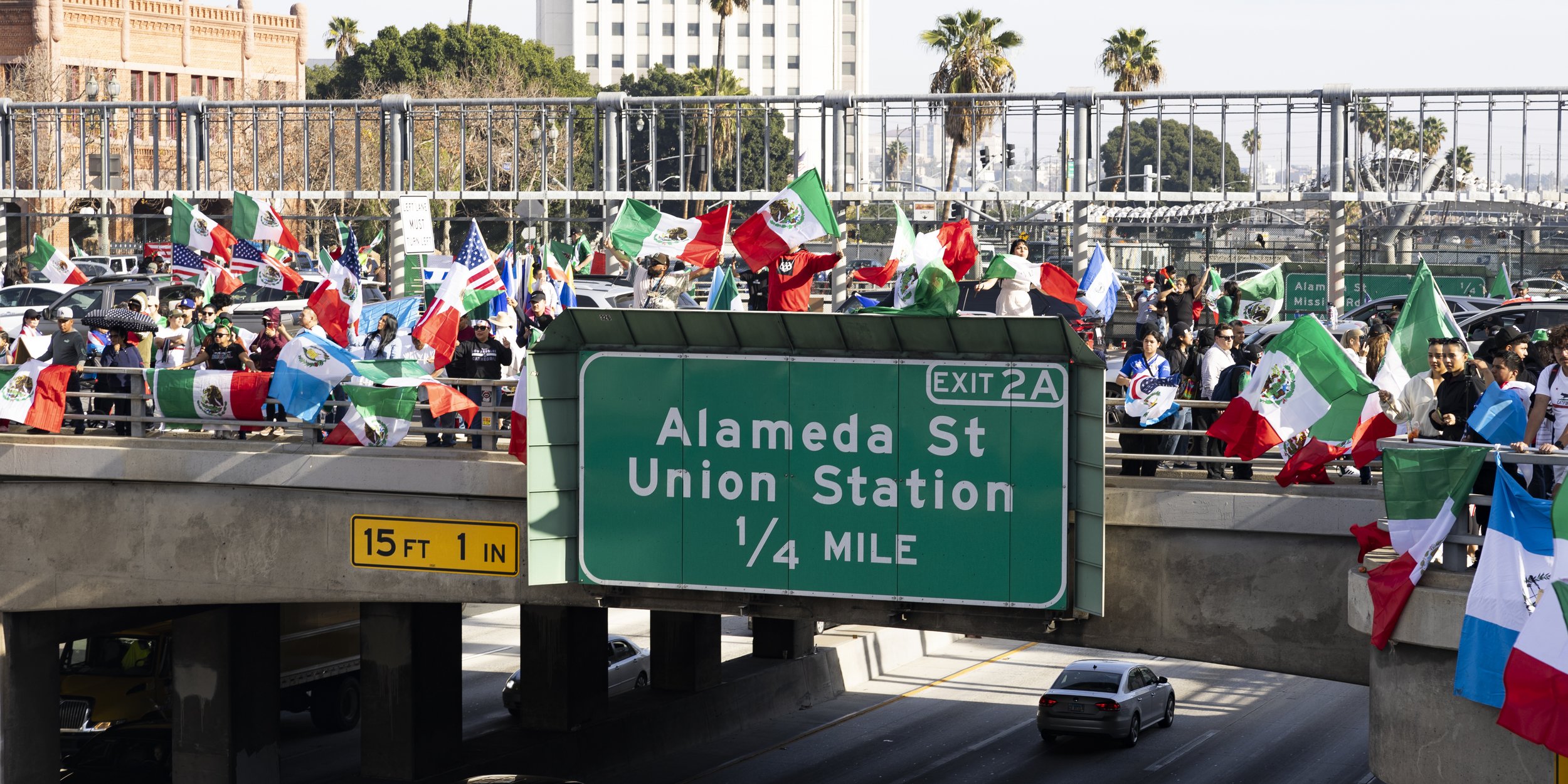
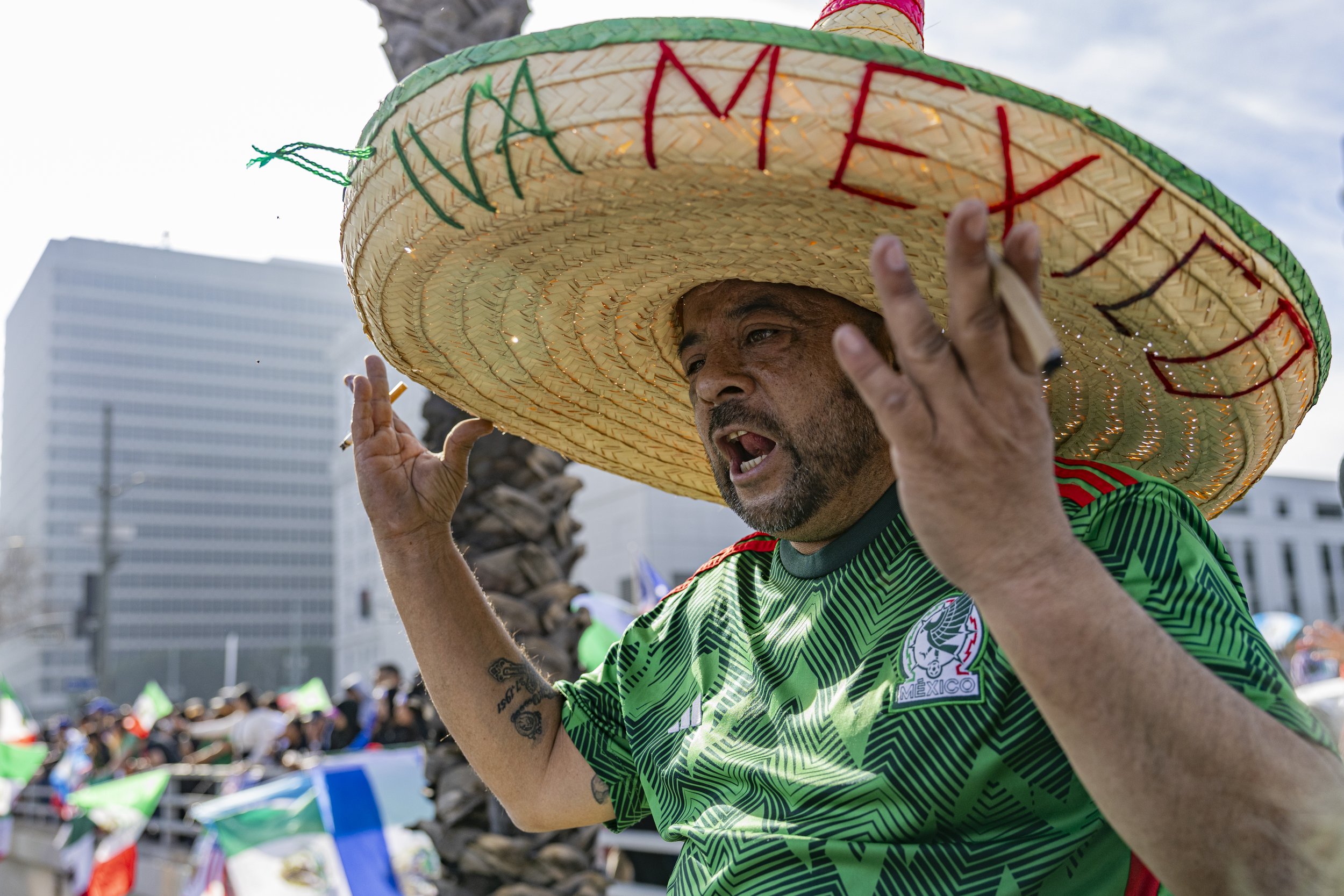
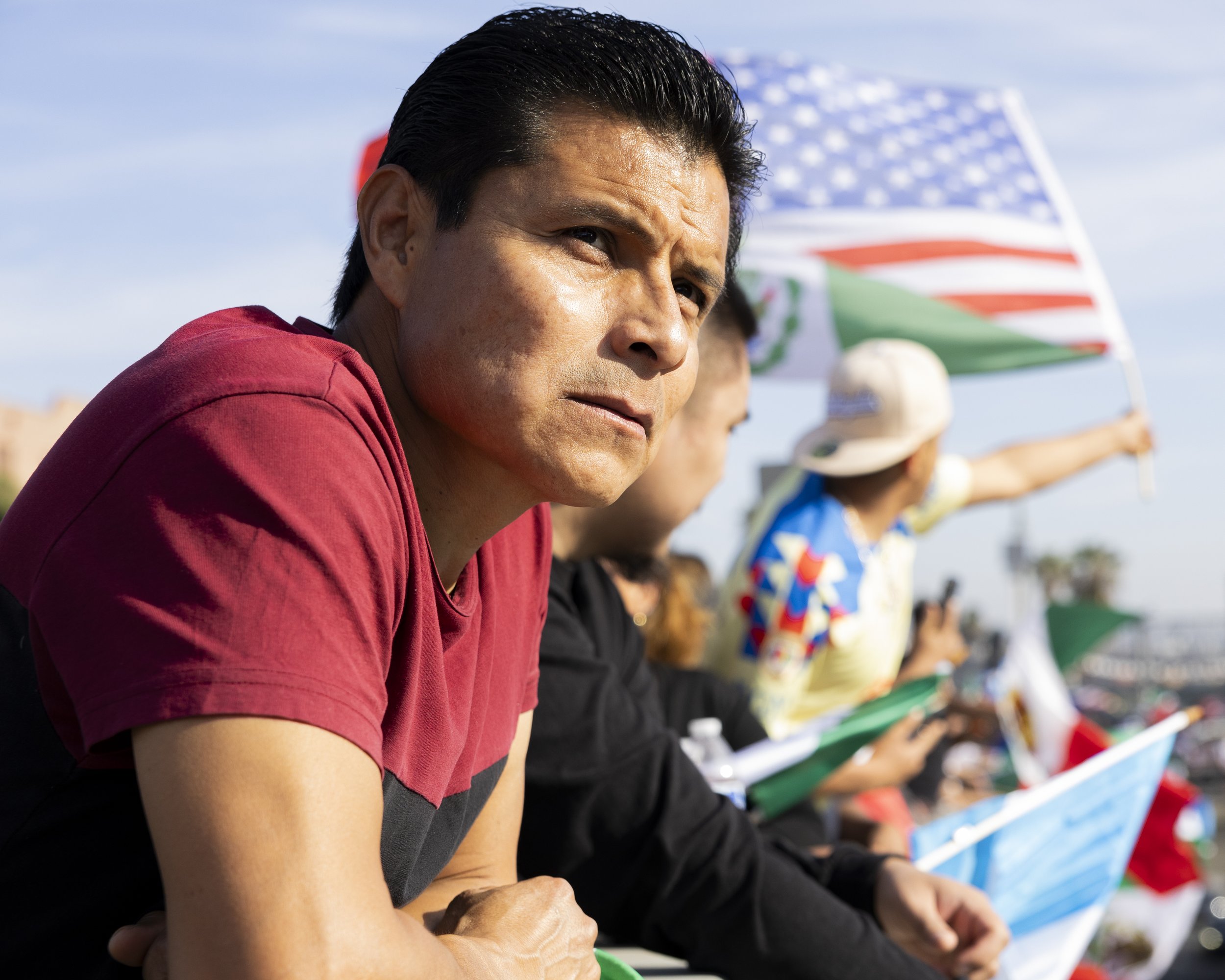
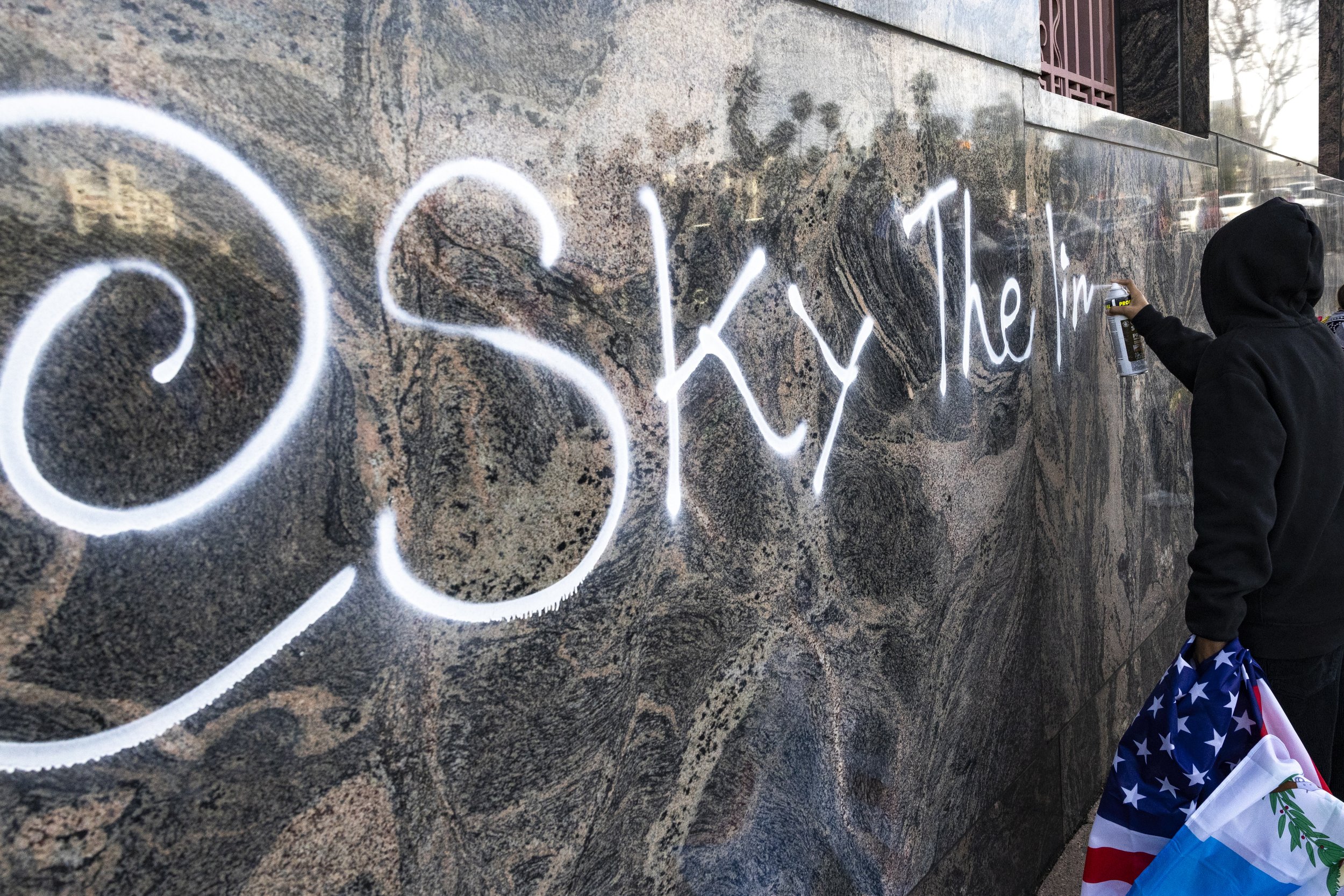
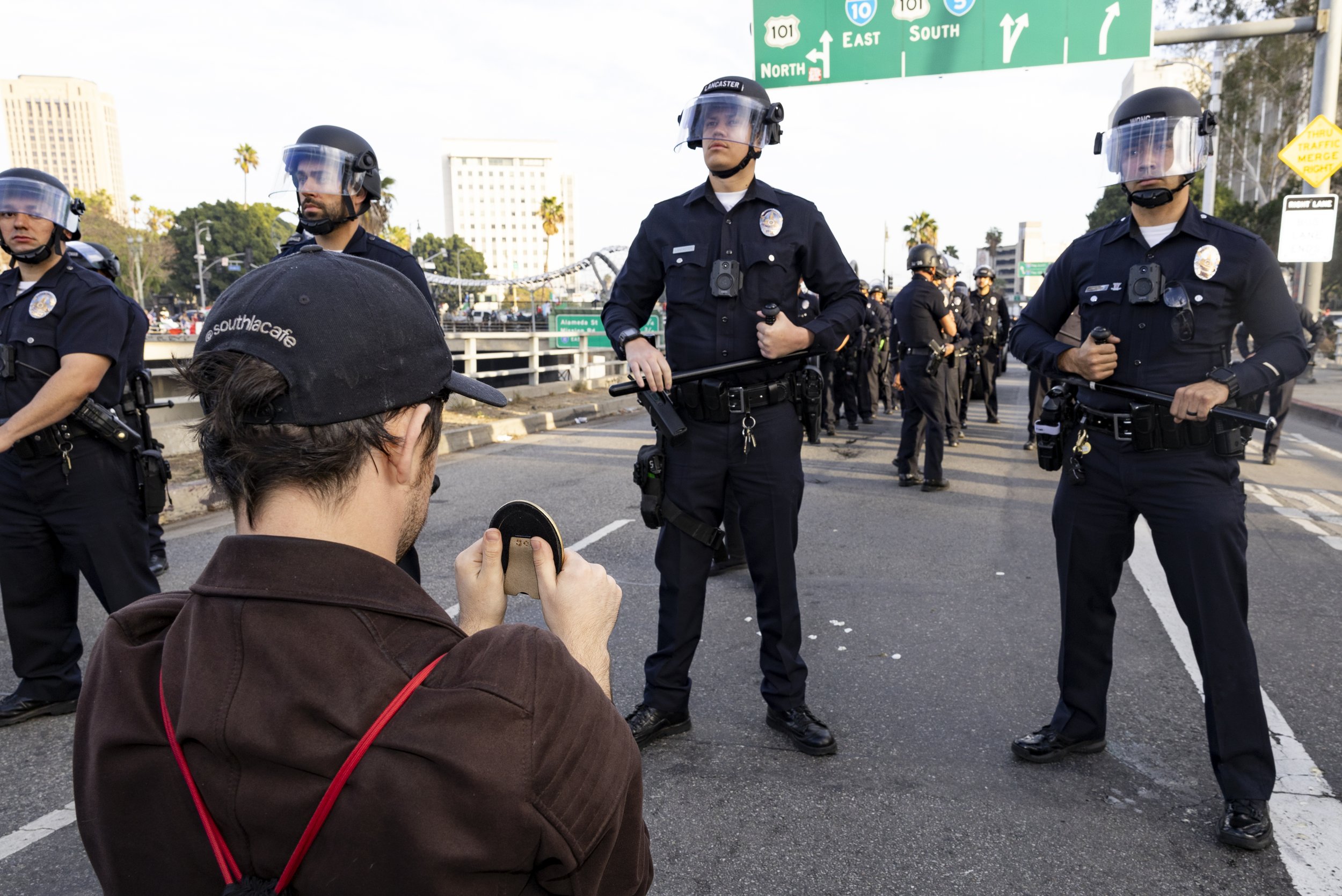
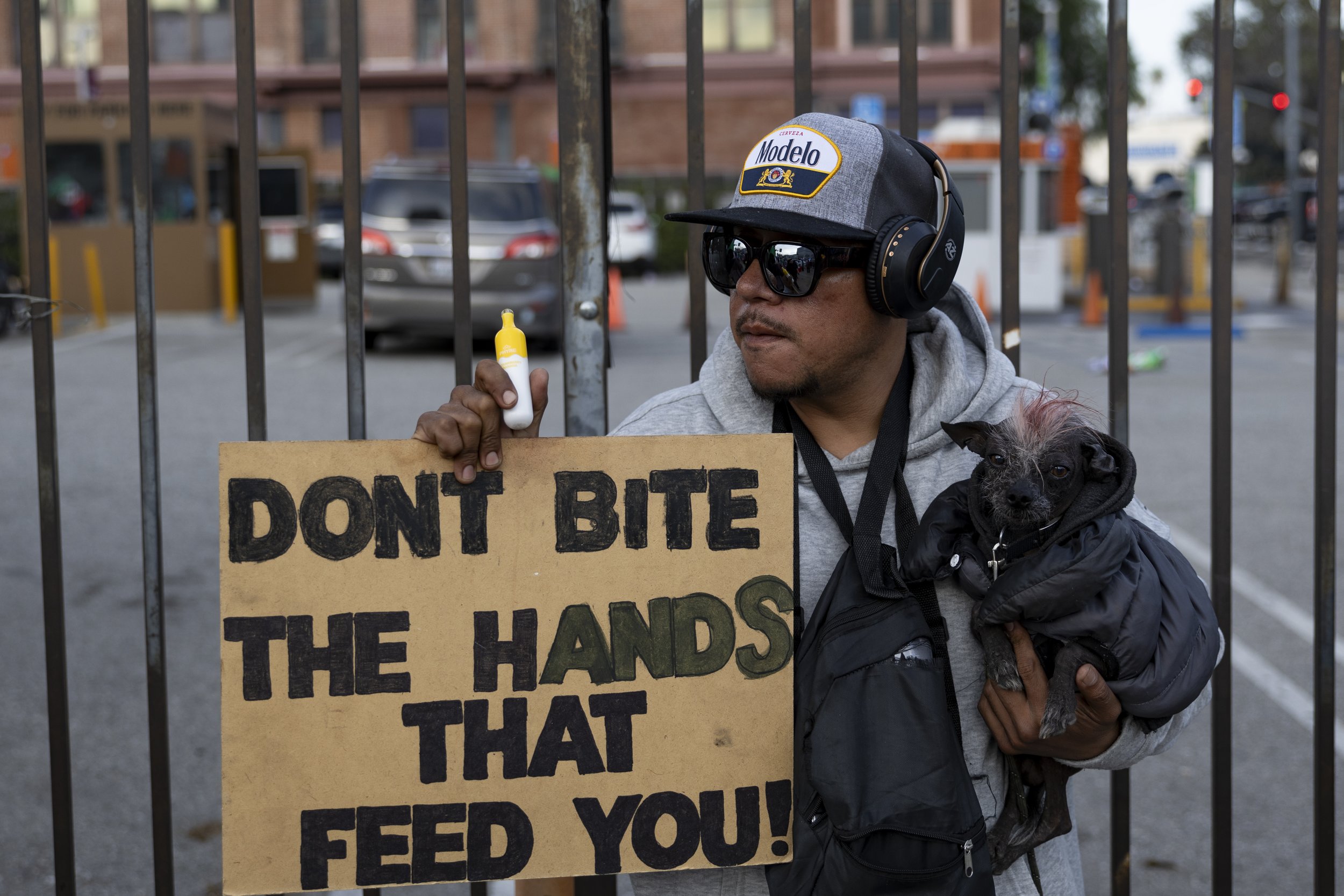
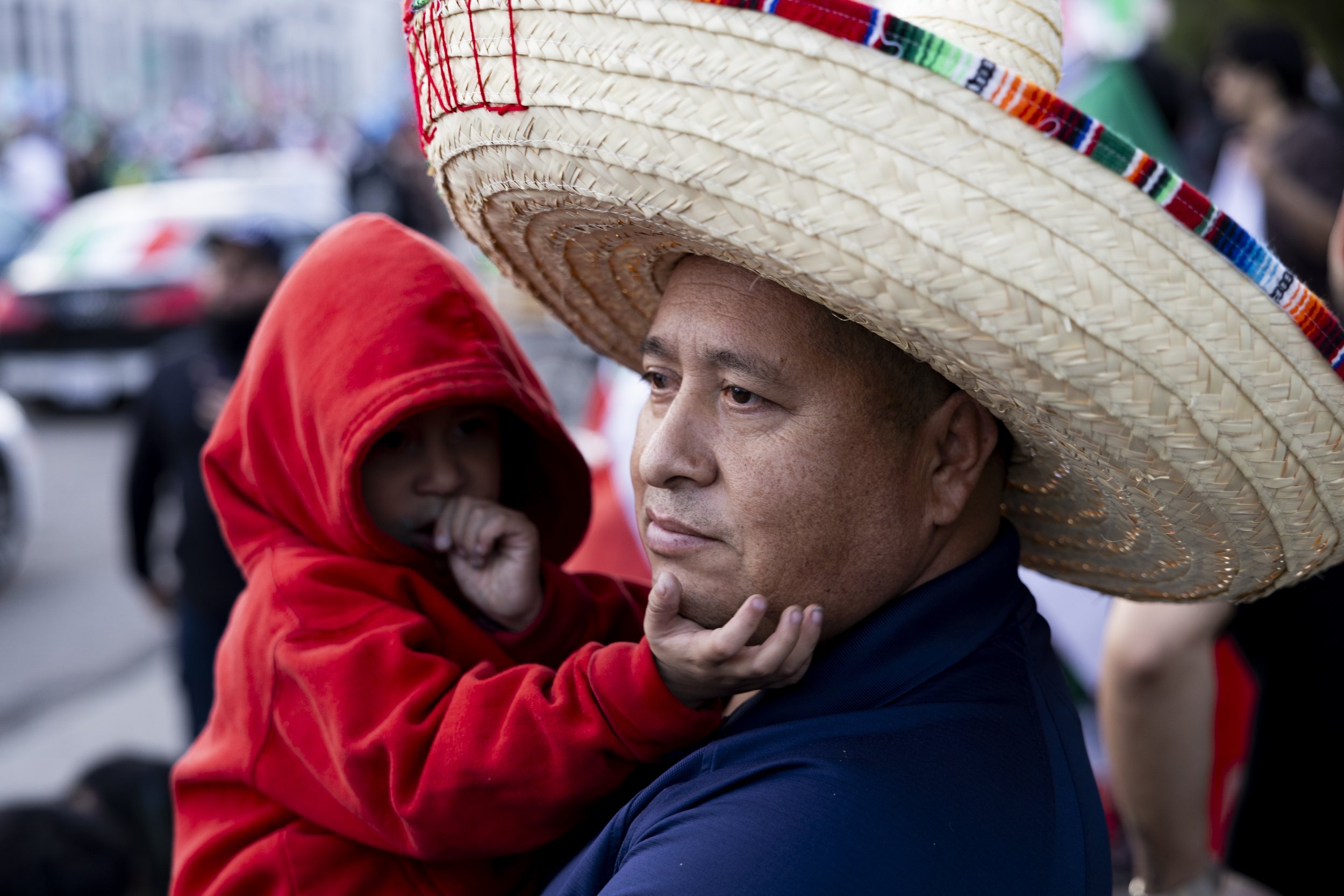
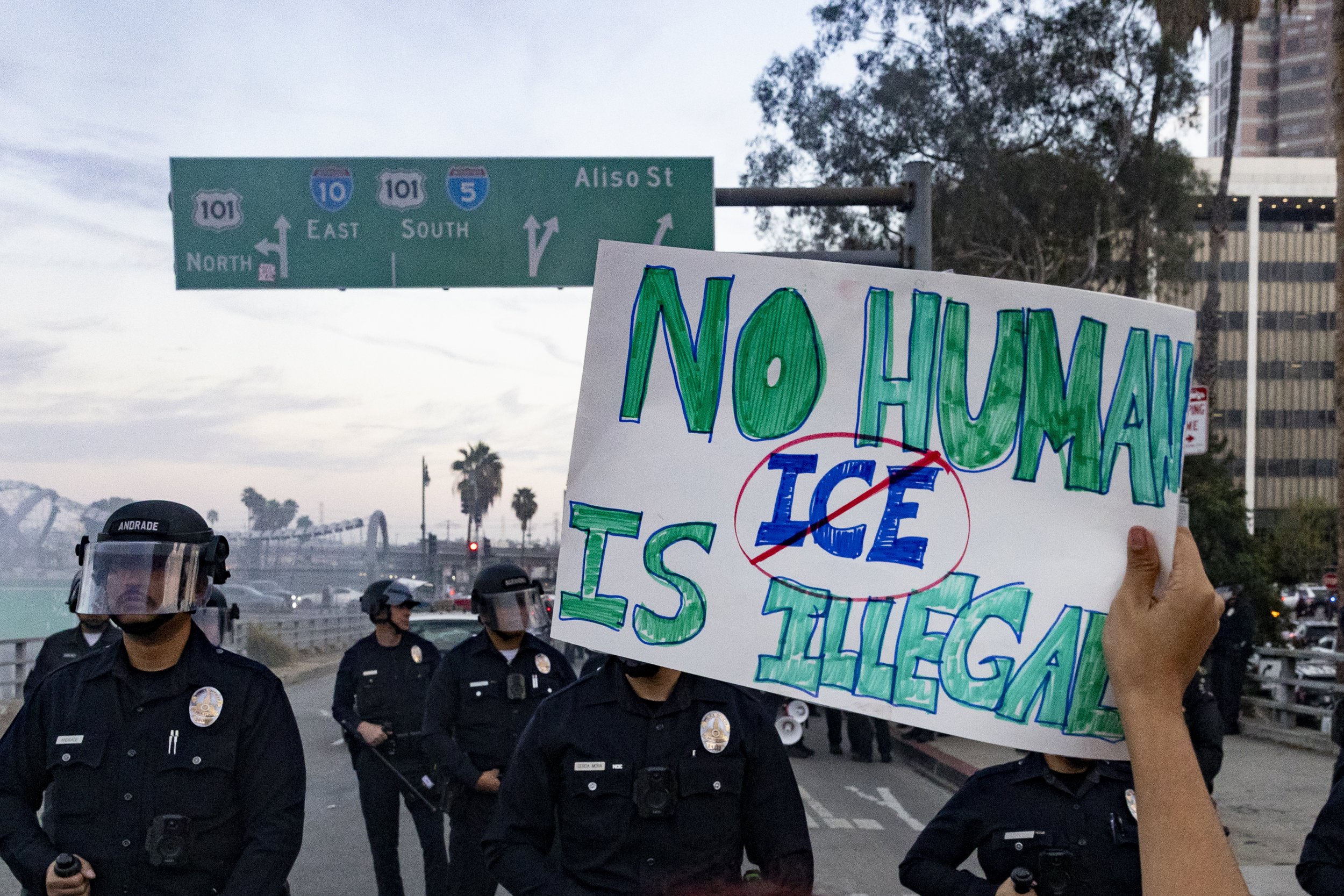
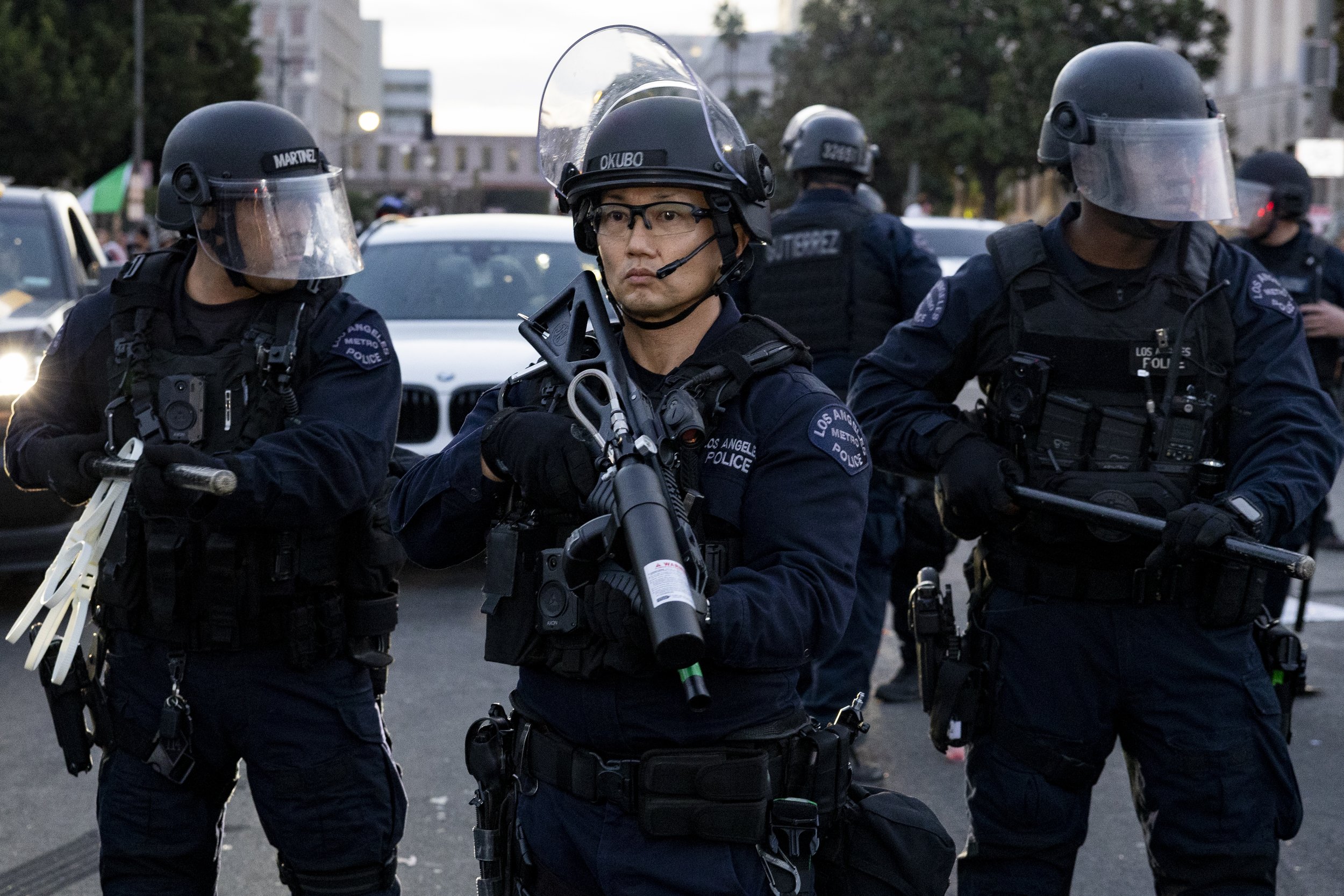
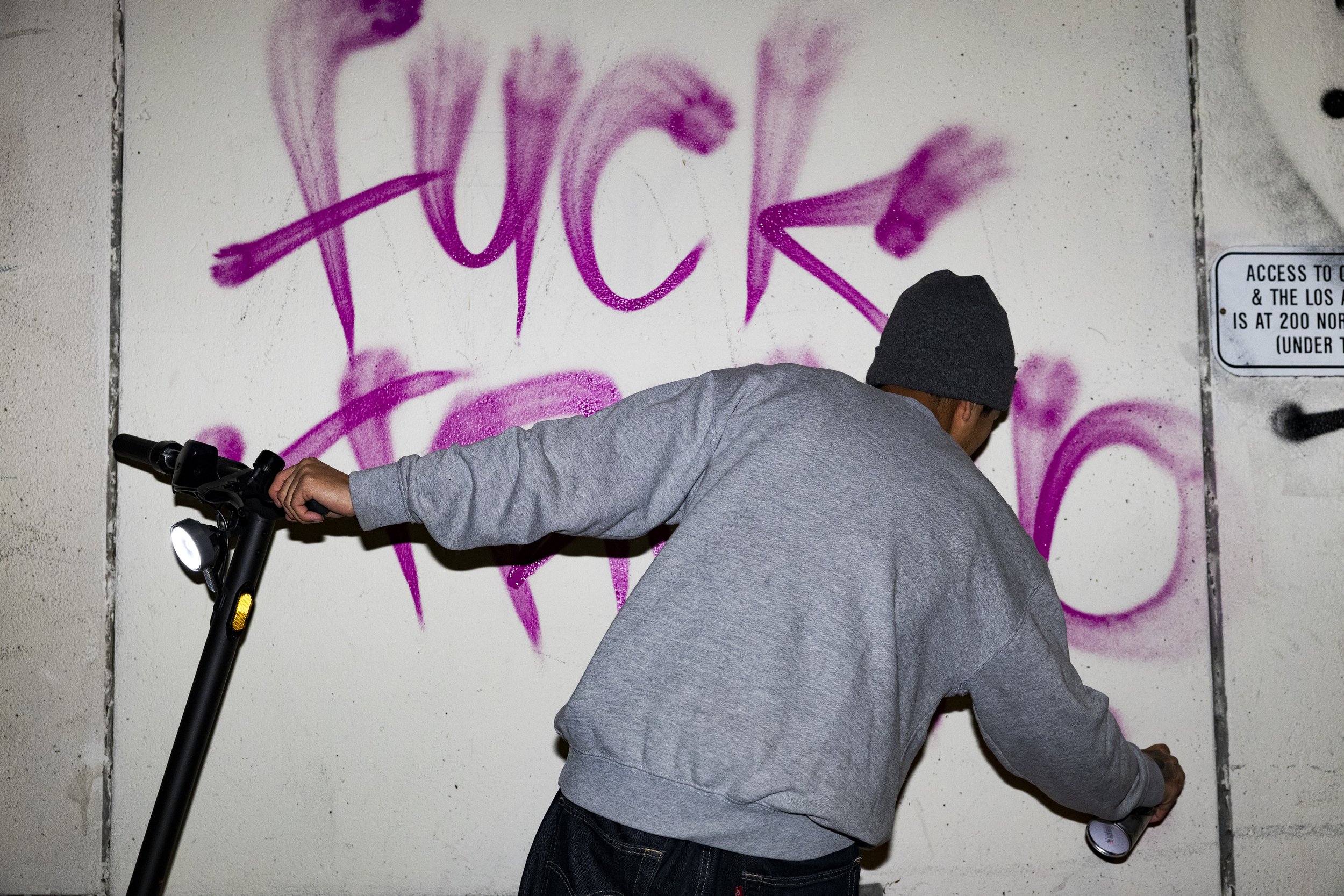
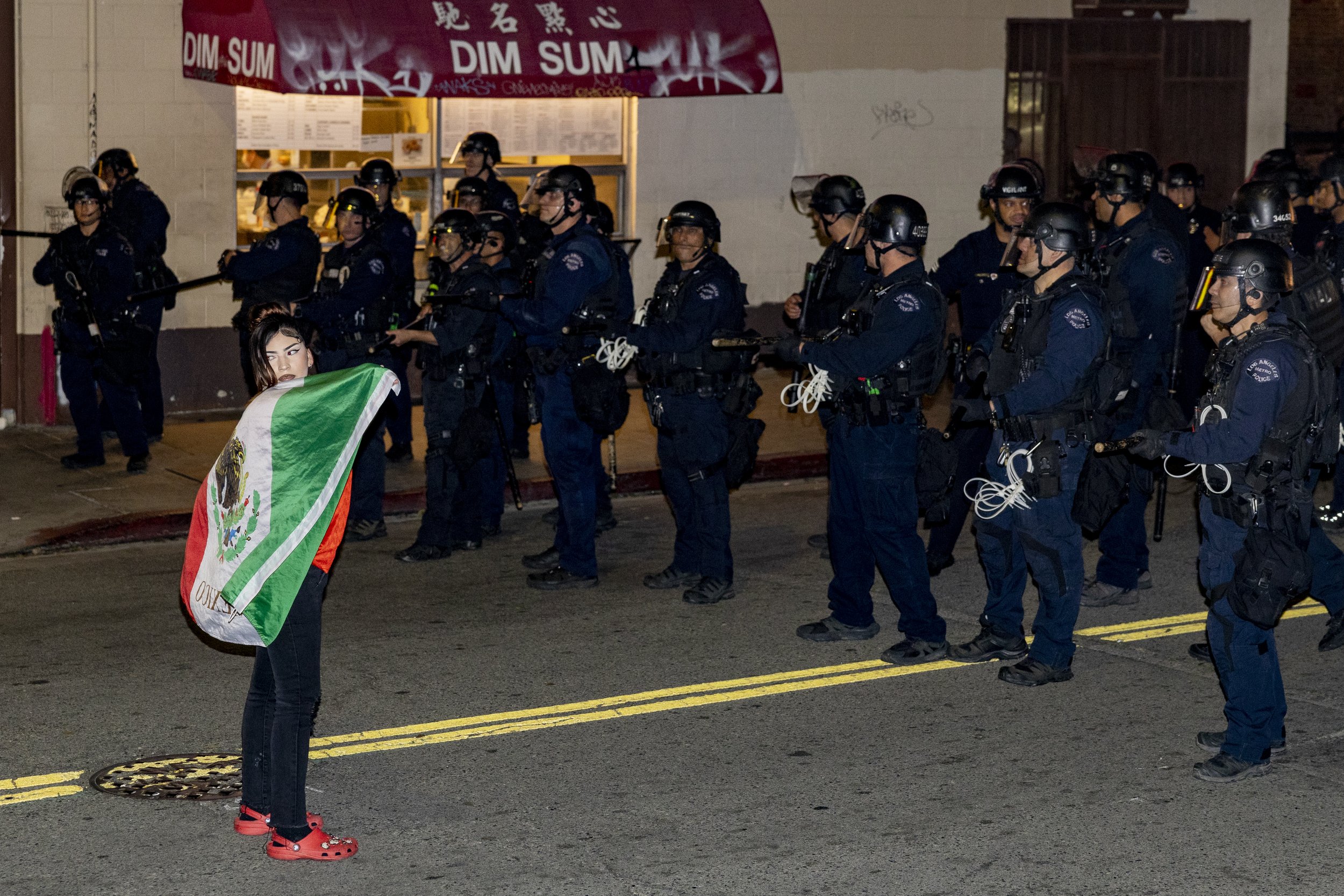
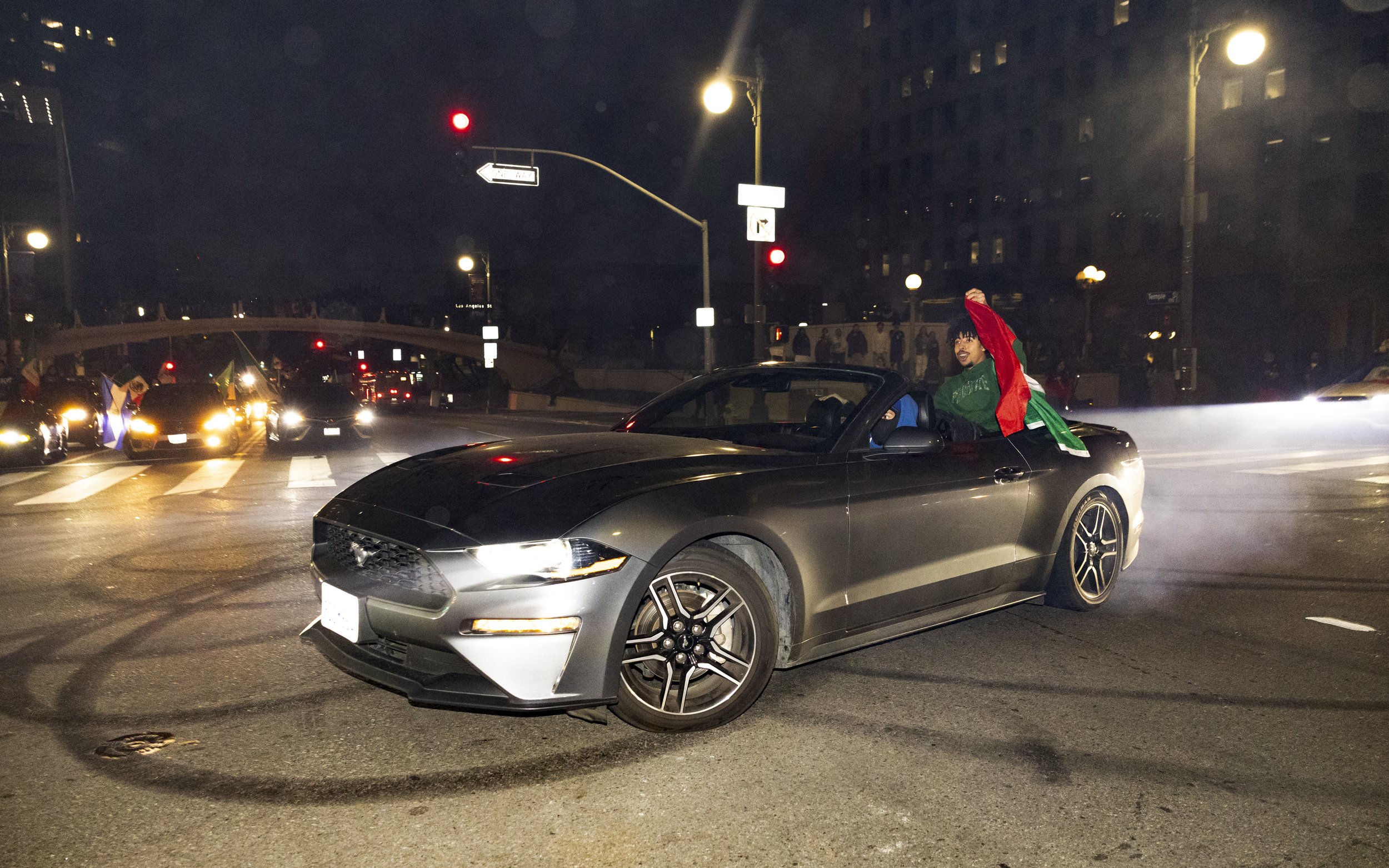
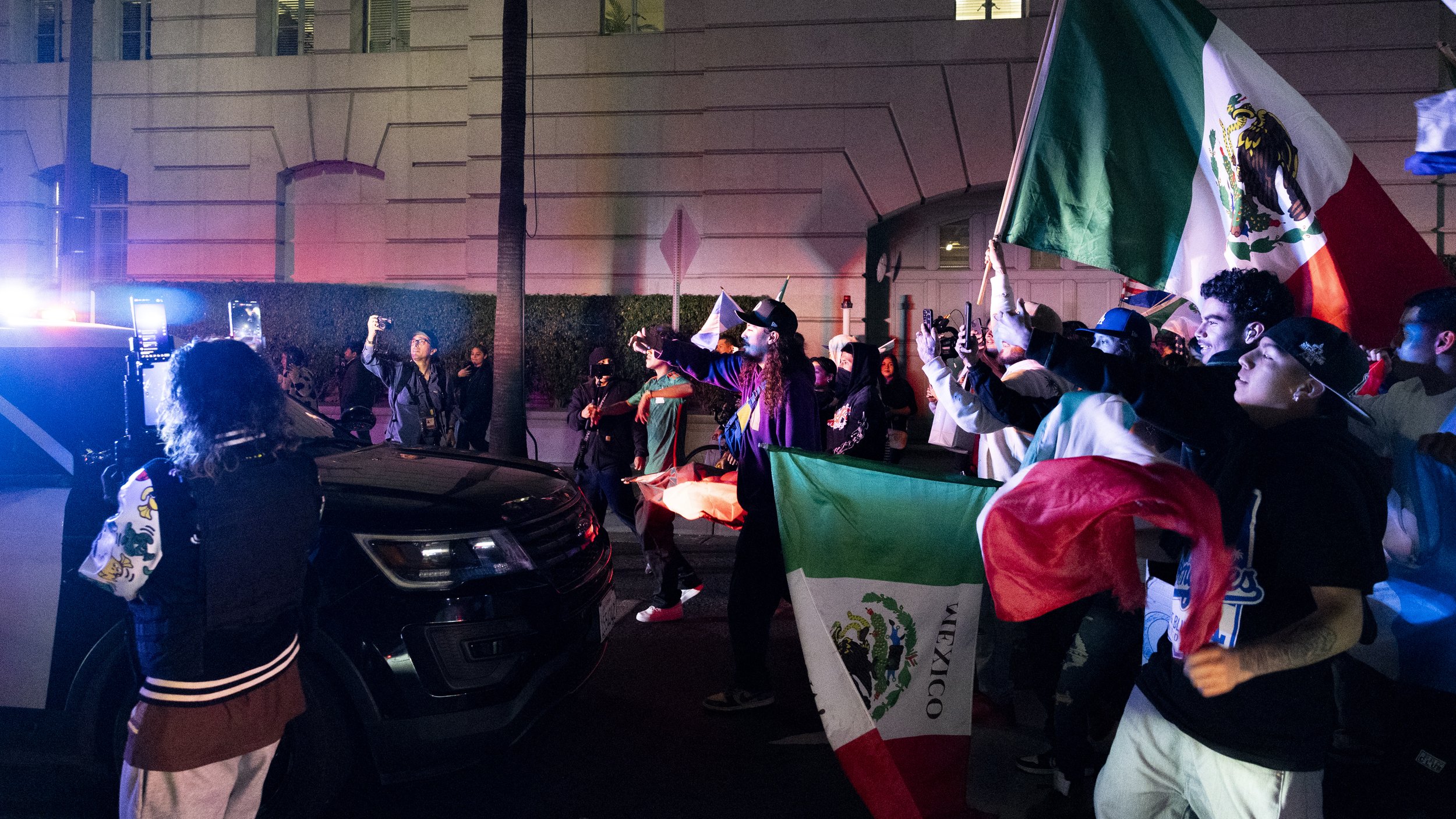
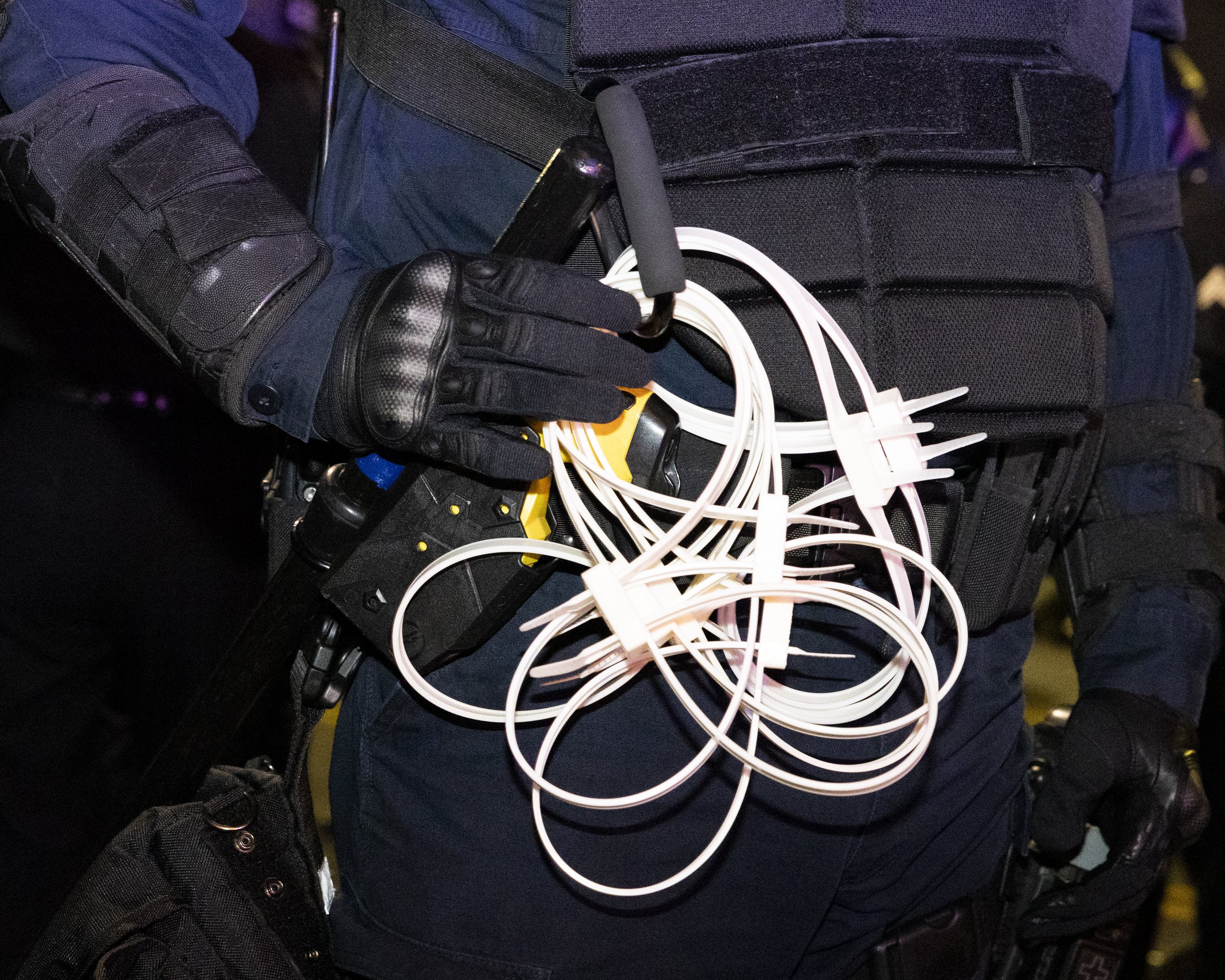
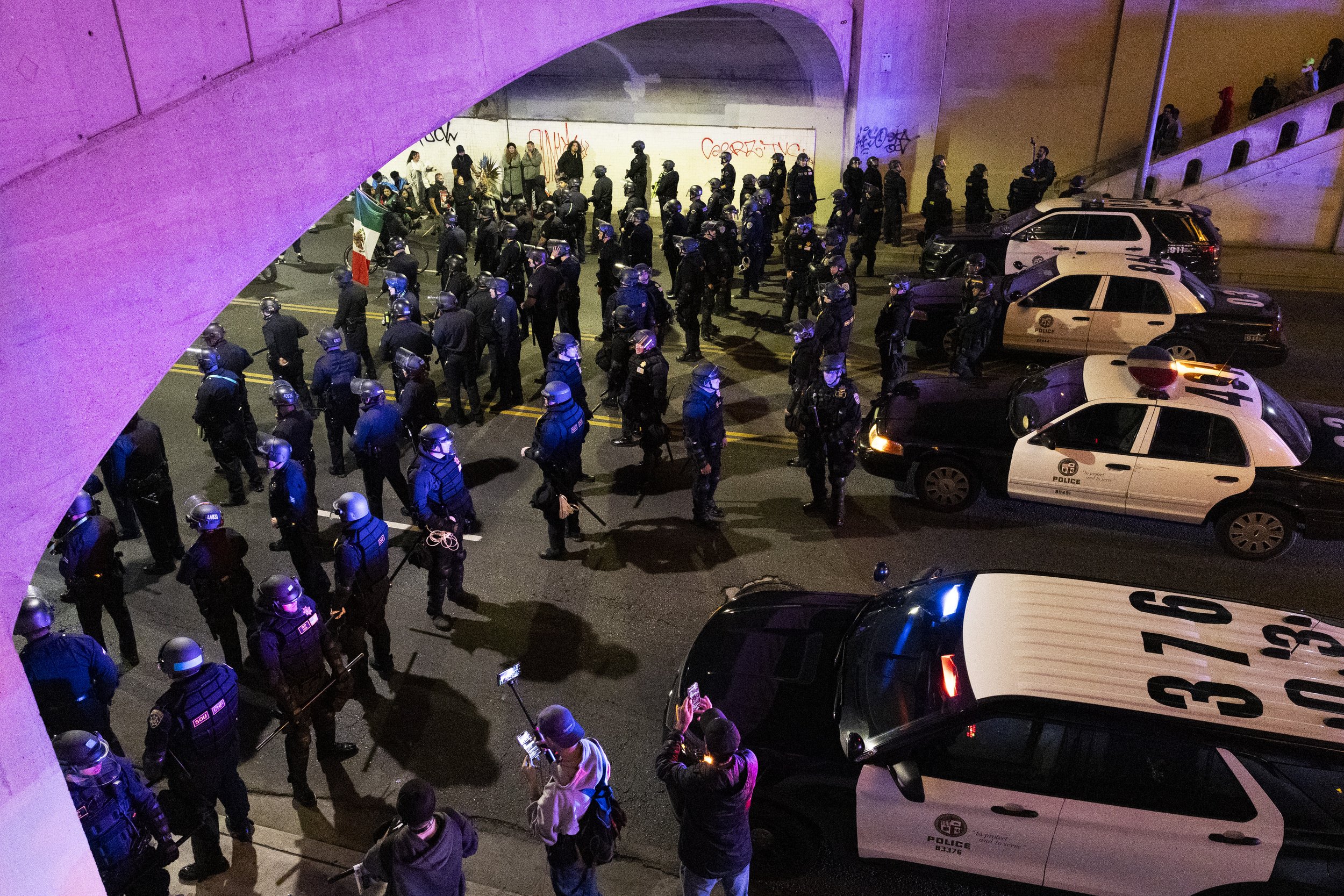
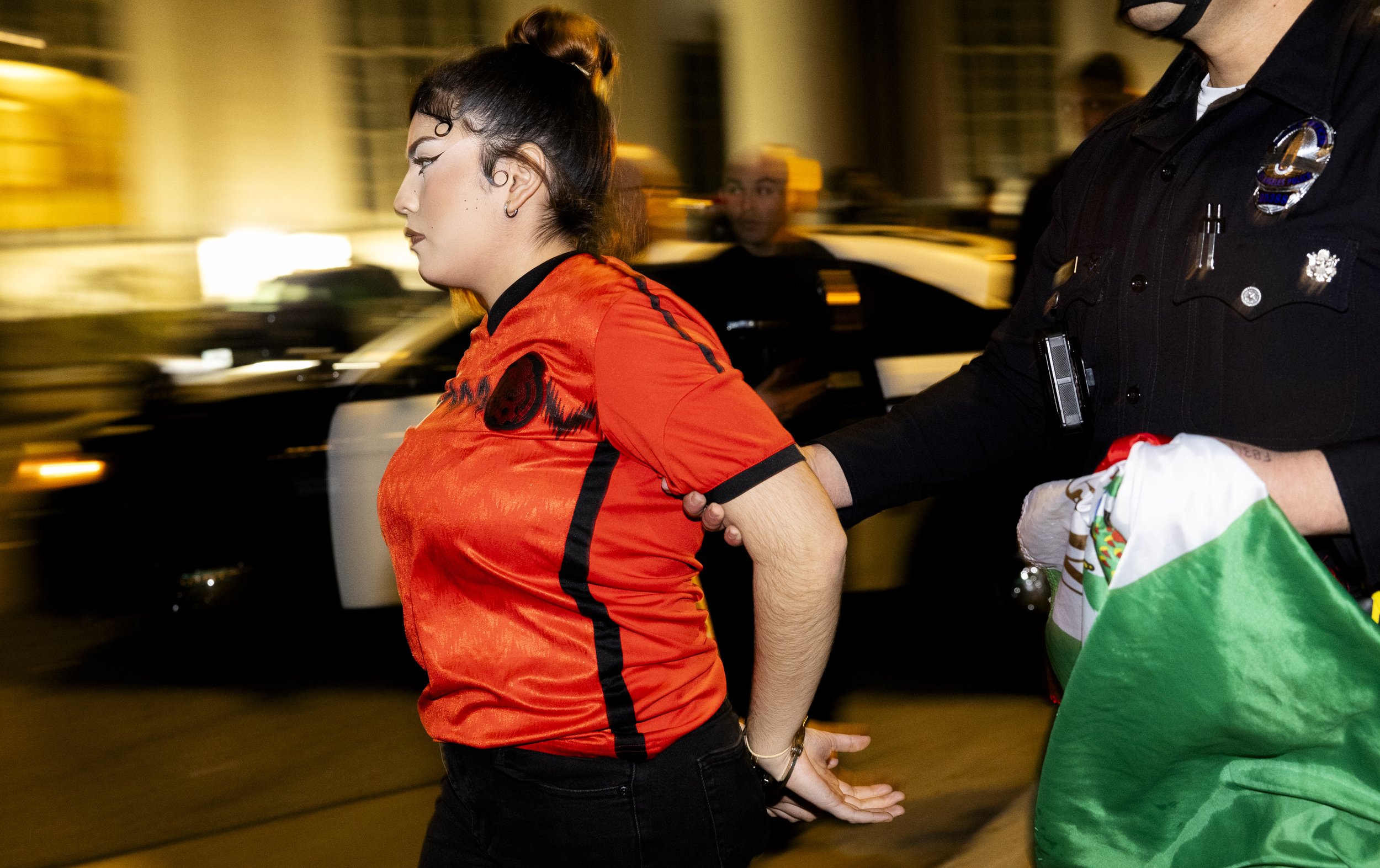

On Sunday, Feb. 2, the city of Los Angeles was affronted with the first in a weeklong series of anti-ICE demonstrations en masse, temporarily occupying the 101 Freeway. On Monday, the city was left soaking in the residuals. Racks of discarded poster boards hung lame on scuffed sidewalks and fences, the grasses of City Hall were trampled and gritty, and every building surface for miles was scorched with “Fuck ICE” insignia in spraypaint.
But as the city awoke, the fury was slowly rekindled in slow-burn increments. What began with a dozen teenagers lulling about the Plaza Olvera with nation flags snowballed as the group traversed to City Hall and back. On the way, the marchers were sweeping up the flotsam signage from the day before and hoisting, along with a progressing influx of new recruits from school walkouts, worker strikes, and representatives deployed from leftwing organization.
Somewhere along mid-morning, there was ordained a brutal cacophony - for the next 12 hours, not a second was spared from bullhorns, sharp whistles and flutes. Vehicular passerby providing additional chime resulted in an infernal, stewing orchestra, rendering interpersonal speeches near impossible.
There is something inadvertently relevant about the all-imposing bugles that covered downtown without a spare inch of solace. It wasn’t simple upheaval or blind disruption, though they had the effect of shutting down the senses. They were alarms, blasting calls that forced the immediate refresh of nearby security, before anyone found themselves too comfortable.
In spite of the city’s government-coded identification with the label of “sanctuary city,” the posse marching on ‘A Day Without Immigrants’ was not protected by the government, and acted knowingly. The Los Angeles Police Department (LAPD) was eagle-eyed in apprehension, monitoring constantly. But, the work of the demonstration was recalibrating “sanctuary city” terminology itself - renewed with a new face, with the strength of the commune.
In engulfing both work and consumer boycotts, the protest was threatening a post-mass-deportation environment sans immigrants, stricken of their businesses, labor and pursepower. It was a warning simulation for the American economy, testing the effect of that kind of deprivation. But the concentrated congregation of immigrants at one demonstration was a revelatory move, indicating their absence wouldn’t be a depletion, but an active formula for damages unprecedented and scarring.
Indeed, a state of constant agitation was induced, firing the protesters in a marching frenzy around South Park in a group fronted by a bicycle brigade. More and more protesters were magnetized, flying the nation flags of Mexico, El Salvador and Guatemala. By noon the marching action combusted and settled around the 101, centered on North Spring. On the concrete battleground below, the march’s former warzone, squad cars were positioned on the offramps to block protesters from repeating occupation.
In a rare moment of organization, marchers clustered around a girl with a megaphone, perching out of a shining automobile.
“This is beautiful,” she said. “And this needs to happen every day, because this is fascism.” Affirmative shouts and hollers followed.
From that moment on, the only organization was achieved accidentally or by virtue of population density. And so began the six-hour jamboree on the overpass. The group, in a natural state of overflow, appeared to prefer shoulder-to-shoulder chaos, fencing in along every spare nook and cranny of the sidewalk.
Every new area within shouting radius was quickly brandished with tributes: “Fuck ICE” mottos sketched in red, blue and green; stray instruments lining the gutters; and the cyclically renewed sources of moraine: signs scattered and left for the next person, weathering biologically with the hours.
Without the grounding of speeches or chants, the demonstrators turned to each other for entertainment, draping themselves and their flags on the overpass, climbing and straddling stoplights, stomping crudely over last night’s confetti and crushed Modelos. The bike brigade, now disseminated, crept up again for individual skillshows, to receptive audiences in orbit.
Another activity of interest was to join the crowd in mobbing the LAPD line, arranged on the intersection of West Aliso and North Main. Beratement ranged from loud-mouthed insulting to physical leering in silence. Officers refused eye contact. They maintained the line, but did so as a stiff bastion, rigid, unblinking.
Several protesters noted members of the police lineup on guard with Hispanic surnames. In speaking about them, they called these officers traitors. In their duty-bound formation, the genuine feelings of the officers were not discernible.
In the crowd of a thousand, the amperes were unrivaled and unrelenting. As with the horn squeakings, out of a stormy sea of individual agreeable monotones arose an inevitable diatone.
These were the capitalizing theologians, the repeat rev-com newspaper distributors shelving out leaflets, and the unaffiliated apolitical livestreamers with a blind animalistic drive to spectacle. Aside from the police, they were the only threats to the unifying message, the only premise of destabilization; and only in their alternative intentions. But between attendees, across the persons who wanted the march to continue occurring, the actual skirmishes were negligible - the ideology was far too unifying.
Even the J-Line was flourished with “Fuck ICE Fuck Da Pigs” in graffiti. Bands of youths and the wheelchair-bound alike found room to mount their flags. And visiting supporters on pitstops left their edges: a flare of affable car horns; a curious culture of engine revving, extra ovated by the dramatists; and constant resupply and circulation of water bottles and kush hits for anyone in need. The mutualism was palpable and spontaneous.
A soundwave of similarly deafening magnitude beamed away from police choppers looming in the periphery.
Upon investigation, finding rootstock proved pointless. There wasn’t the commandeer of a corporation, just a singular, sweeping cause. No sole organization claims culpability, and the craze was mostly ordained with rounds of hype on social media. Word of mouth, too - the handheld chainlinks between attendees indicated the social brevity of the outing. In a cluster, it made little difference. The distinction between stranger and friend was impossible to acquiesce, and in the face of what happened, it was cheerily ignored.
Because it wasn’t squarely political. Spanning a political event across a public center with thousands of participants necessitates extras, gimcracks, decorative flair. Every gap in sound or space was funneled and filled with a charter of drumkicks, banner waving, screeches, crack of a cog rattle, or “La Chona.” There wasn’t a limp moment. And there were serviceable political consequences. Unable to detach, at any moment, the crowd could be roused for a screaming round of “Fuck ICE!”
Optimized into a social extravaganza, the stamina sustained without limit for hours. Eventually, the LAPD called in for reinforcements.
The police line closed in and cleared the demonstration from Main and Aliso, sending swaths of protesters down North Main Street as beer bottles smashed on the sidewalk.
Like clockwork, the dispersal order was credited with unlawful assembly, the same violation wielded on the freeway blockers. As the marchers touched down in their newfound assemblyplace, the police were creeping up, further encroaching on the marchers every few minutes and pushing back while shouting at them to leave the area.
The tactic appeared successful, in part, as protesters trickled out on unbarriered street corners and fled. Others resisted. Whenever the marchers were pushed into a corner, first order of business was the rush to replace the music, maintaining a perpetual stream of drums and brass. And following the established mutualistic fashion, in the presence of music, mini dance circles flushed nearby, filling and billowing every available crevice. The march’s serendipity, neverending energy, emerged as a social phenomenon.
Broken glass lined the streets.
The front of indifference on the cop line slipped occasionally. During their bout of running, a few officers would break from the line, bolt from the others and shove passerby within arm’s reach. Protesters shouted at each other to outrun them. On East Arcadia, several officers dismantled the pushcart of a hot dog vendor, to the barking indignation of the surrounding rally.
Pushed from Arcadia to Main to Temple, the anti-ICE collective was successfully reduced and filtered through rounds of aggression. But the activity of breakoff envoys carried on into the night.
A few blocks north, upwards of 200 protesters were detained under the tunnel on East Cesar E Chavez Avenue.
The sect had broken from the main channel of marchers during initial dispersal efforts. A police barricade blocked both tunnel entrances, enforcing a confinement that bewildered a few vocalizers.
“Why the fuck am I trapped in a tunnel?” one detainee shouted. “Spread the word!” A gaggle of protesters chanted “Let them go!” while the police maintained a skirmish line.
The protesting crowd didn’t let up on chants as the detainees were released, one by one, with warnings.
The pattern was inevitable, and well-understood by the protesters as preliminary qualities of march. What, then, was the need for ruckus, predestined chaos, that obeyed a fixed style established not 24 hours before?
The city answers.
Donald Trump was elected President in November on a platform spearheaded by the promise of mass deportations. In December the L.A. city council confirmed and adopted a formal sanctuary city ordinance that banned the use of L.A. property and personnel “from being utilized for immigration enforcement or for cooperation with immigration agents.” The ordinance included a special clause of urgency, demanding execution within 10 days of passage.
Yet on Jan. 26, the Los Angeles Division of the U.S. Drug Enforcement Administration took to X and announced their compliance providing assistance with “DHSgov and other federal law enforcement partners w their immigration efforts. Today, our agents conducted enhanced targeted operations throughout L.A.”
Both the ordinance and the memos circulating from L.A.’s former havens - schools, churches, hospitals - are rife with caveats. Legalese amounts to little more than an admission of compliance. In a statement, Santa Monica College announced their plan to withhold student information from immigration enforcement authorities, “unless required by a subpoena or court order.”
The language is deliberately tight and subject to pass any politician’s exam. But the protests and their social reception are indicative of the city’s interior sensibility on the matter, consisting of an equivalent “sanctuary city” ordinance of spirit.
This spirit ordinance harkens back to the Great American Boycott, the march of 2006 that served as the founding instance of the Day Without Immigrants tradition. About half a million people rallied downtown against H.R. 4437, the immigration crackdown bill that called on Homeland Security to enact physical infrastructure and top-down border surveillance. Over a decade later, in 2017, facing Trump’s commitment to construct a border wall, another city march with the same name arose downtown, rooting from similar wellwater.
Alberto Valdes, an organizer of the 2006 kickoff, made a comeback at this year’s demonstration. Valdes wasn’t fazed by the chaos. He even expressed, with certitude, that the marches will progress upwards and outwards over the next three weeks, no steam lost.
A similar ordinance, a police order from 1979 that barred cops from detaining Angelenos on the basis of undocumented status, earned the city the unofficial labeling of sanctuary. In 2016, however, former mayor Eric Garcetti dismissed the term outright, calling it an “ill-defined” misnomer when L.A. “cooperate(s) all the time with federal immigration officials.” In consequence, Day Without Immigrants marchers sought to take the ordinance into their own hands. It was a form of symbolism, of messaging, even branding.
In revitalizing a dormant tradition, the movement was collectivizing strength, relishing in their shared culture, and continually affirming and applauding each other’s existence. It seemed they were taking the “sanctuary city” ordinance and taking it personally.
Sure enough, after the dispersal on Tempest, another faction rematerialized on the corner of Avoyelles Parish Police Jury, transporting music, lines of dancers, and a repeated fervor. To revive the night of showmanship, cars twisted around the demo in tight circles; when a rider was sent flying, the group stormed the intersection.
This time, when a barrier of cop cruisers approached from the opposing lane, the protesters were ready. In a stampede, on foot alone, they forced the vehicles to backtrack past City Hall and out of sight.
The strength wasn’t perceived as ineffable by everyone.
“I just hope no one gets hurt,” one attendee told the Corsair. “But someone always gets hurt with these things.”
Where the government dismisses the sanctuary of the city, there is a deep nation of people willing to defend it by hand.
